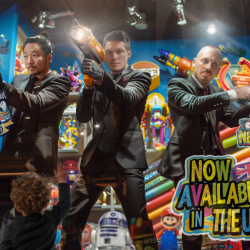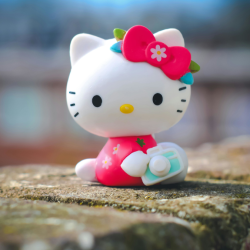For the last decade or so, mindfulness has been promoted as an ideal state we all want to achieve. Many brands and consumer trends have promised calm to customers. Headspace is a standard tool, yoga is for everyone, CBD drinks are everywhere.
Living with these trends has instilled a general awareness of mindfulness practices in many people. Whether you go to morning yoga or not, you know it’d probably help your busy, anxious brain if you did. We don’t all have the energy, money or time to participate in an active ‘wellness’ lifestyle, however.
Here are some ways that people are creating their own version of wellness in 2023, and the brands that are getting on board:
Aesthetic laziness
Instead of trying to drag oneself out of a sleepy, apathetic state, why not give in to it and try to enjoy the downtime? Trends like ‘bed rotting’ (not leaving the bed), and ‘girl dinner’ (lazy, snacks-as-dinner meals) accept the reality that sometimes, you just can’t be bothered.
On the one hand, this can be seen as perpetuating sedentary lifestyles and disordered eating. On the other hand, they can be seen as a celebration of a simple, unbothered life, accepting fatigue and riding with it as a form of mindful-ish self-care.
It all depends on the person and what it means to them.
Brand example: La-Z-Boy’s We the Lazy advert celebrates that ‘can’t be bothered’ life:
‘We will be reclining until further notice… It’s our right to let the dishes soak overnight, and to mow the lawn tomorrow…ish.’ The brand even created a new AI-powered humorous ‘Decliner’ prototype, which generates excuses for those times when you just don’t want to leave the house.
Tiny treat culture
There’s a trending TikTok sound that states: ‘Daily reminder for those of you being shamed for buying things that aren’t necessities in this economy, that if it keeps you from killing yourself, it’s a necessity.’
This sums up the tiny treat trend — an appreciation for the little things we gift ourselves, like iced coffee, cake, cheap cute toys. In this economy, big purchases are so far out of reach for many that the aspiration for them can cause depression in itself.
Nowadays, if something small keeps you happy you shouldn’t feel bad for having it.
Brand example: Starbucks iced coffee has become the iconic tiny treat, partly because of boomers berating younger generations for ‘wasting’ money on things like coffee and avocado toast (as if those savings would equate to a house deposit). It’s a year-round guilty-not-guilty pleasure, something the brand now leans into.
Brain space
Feng shui, Marie Kondo-ing, decluttering, minimalism — none of these are new. What is new, however, is a growing focus on perfecting one’s personal space in the way that works with your own unique sensory preferences. Interior trends like dopamine décor (bright, cheerful colours) and house hushing (removing visual noise) focus on filling the environment with whatever makes your brain happy in that space — by sparking a positive chemical, or tweaking the sensory levels.
This is connected to a growing understanding of neurodivergence and sensory processing — everyone experiences the world differently. Some people thrive among their trinket collections, others want peace.
Interior decoration has typically been inaccessible to renters and those living at home, but an explosion of renter-friendly DIY decoration influencers and accounts is encouraging people to adapt their space, however temporary or small, to make themselves happy. The benefit to your brain is worth it.

Brand example: Lick paint’s positioning builds on familiar calm design cues with muted millennial earthy pastel colours. However, there is an extra sensory angle, with taglines like ‘You can practically hear the sea‘ and images of people doing DIY whilst listening to large noise-cancelling headphones. These aspects promote decorating as a positively calming sensory experience.
Self-acceptance
A running thread through these mindfulness trends is an understanding and acceptance of one’s own needs, with no need for comparison or extra effort to change. People are finding ways to allow themselves to simply be, to give their bodies and brains what they want in the moment, without aspiring for more.
For brands, doing nothing, or doing the bare minimum, can be tricky to tap into. But when it’s done right, it can bring an unexpected amount of calm.
After all, we all want an easy life.
Featured image: Samantha Copper / Architectural Digest




























